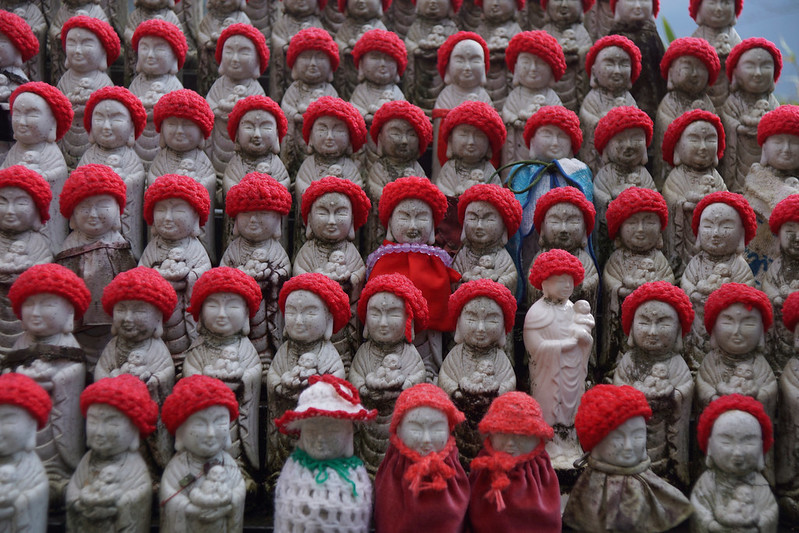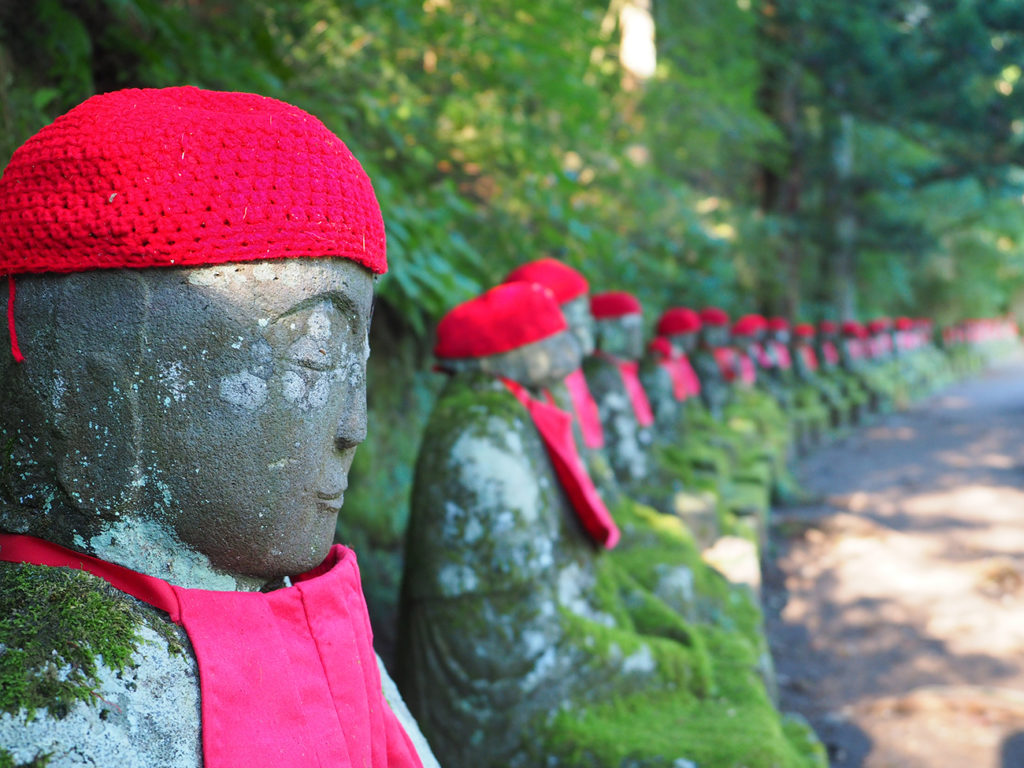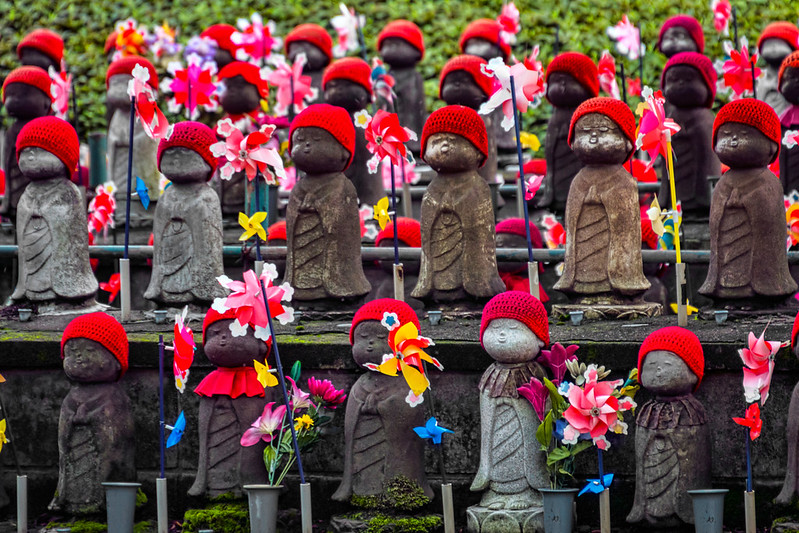
The Sad Truth About Jizo Bosatsu Statues
It’s hard to miss the statues of various sizes that are found in most Japanese cemeteries. A lot of the statues are garbed in knotted caps and baby bibs. Some even have rouge and lipstick coloring their stone faces. These statues are called Jizos or Jizo Bosatsu.
Jizo at Kanmangafuchi Abyss.
Jizos represent the enlightened being, Ksitigarbha Bodhisattva (Jizō Bosatsu, 地蔵菩薩) who is revered primarily in East Asian Buddhism. Jizo Bosatsu is mostly depicted as a Buddhist monk. His name means Earth Stone, Earth Treasury, Earth Womb, or Earth Matrix. Ksitigarbha Bodhisattva vowed to teach all beings of the six worlds between the passing of Gautama (Sakyamuni) Buddha and the rising of Maitreya Buddha. He also vowed not to achieve Buddhahood until all trapped in hell are freed. He is known as the bodhisattva of the earth and he is believed to be the bodhisattva of all those trapped in hell, the guardian of the souls of children who have died, aborted fetuses, travelers, and children in general.
The story of Jizo Bosatsu can be traced all the way to the 14th-century Japanese folktale, Sai no Kawara (“riverbed of the netherworld”). Sai no Kawara is similar to purgatory in the Christian tradition or even the River Styx in Greek mythology. It is believed that souls of the unborn or miscarried children who die before their parents go into a state of limbo or a kind of purgatory in the banks of a rocky river. Here the children are forced to build stone towers to atone for their sin of causing heartache, and each night demons destroy the towers they have built forcing them to start all over again.
The Jizo statues represent protected children but the clothing is often given by grieving parents who have lost their children. In Japanese mythological tradition, red is the color that mostly repels demons. We often see these Jizo Bosatsu statues dressed in shades of vermilion or ruby.


